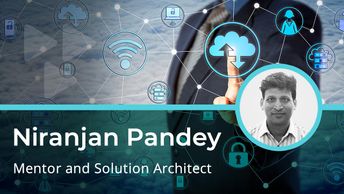Cloud load balancing enables splitting workloads and computing properties to balance load and maximize resource utilization for better user experiences.
In this course, you'll recognize techniques to implement load balancing in the cloud, including selecting the appropriate load balancer. You'll also explore the concept of the virtualization of hardware resources.
Next, you'll examine the prominent load balancing architectures implemented in the cloud and the critical load balancer configuration attributes to manage load distribution and session data. You'll also identify common DNS servers to resolve hostnames into IP addresses and queries used to resolve names.
Later, you'll identify the characteristics of the Remote Desktop Protocol (RDP) and Secure Shell (SSH) You'll then investigate disaster recovery failover in cloud. Lastly, you'll create and configure a load balancer and DNS routing.
This course can be used to prepare for the CompTIA Cloud Essentials+ (CLO-002) certification exam.
| Objectives |
|---|
CompTIA Cloud Essentials+ (CLO-002): Cloud Connectivity & Load Balancing
|


